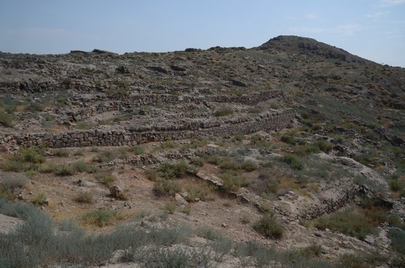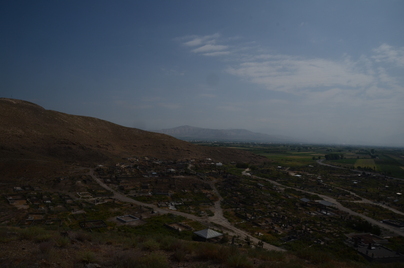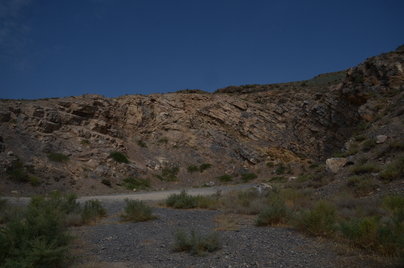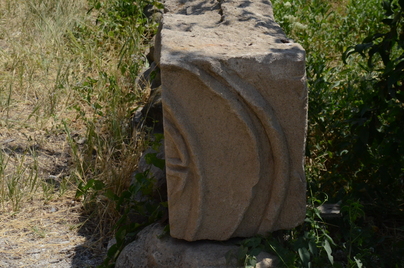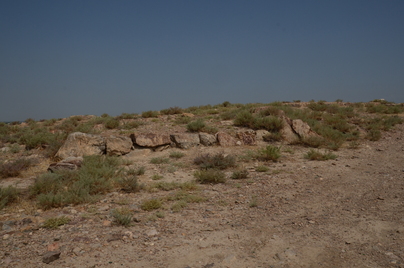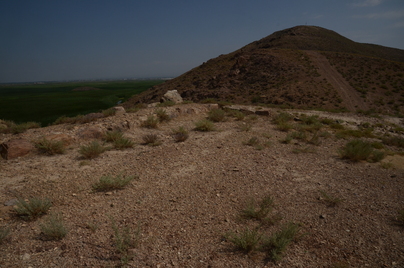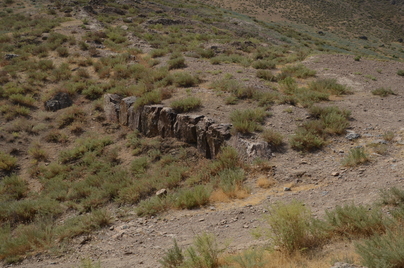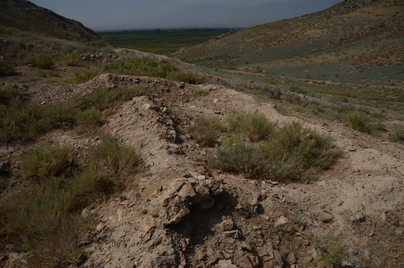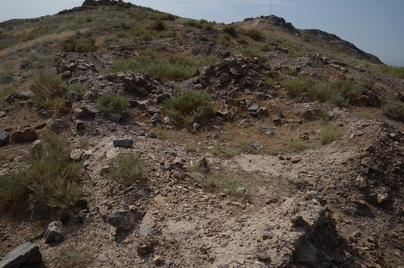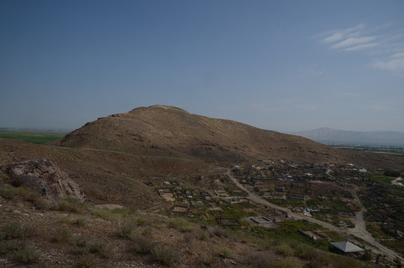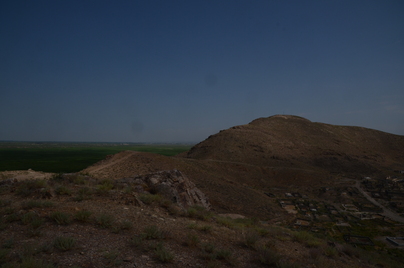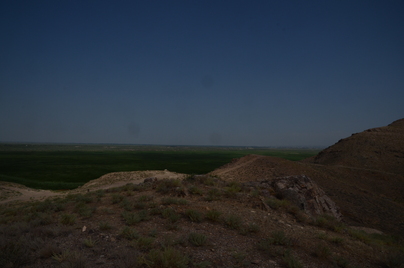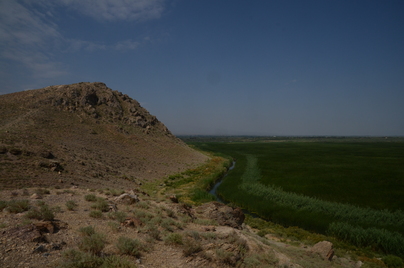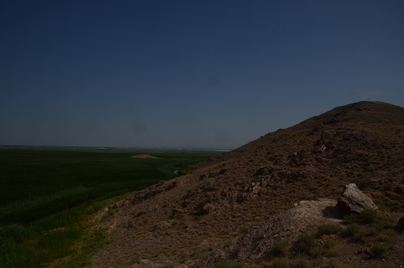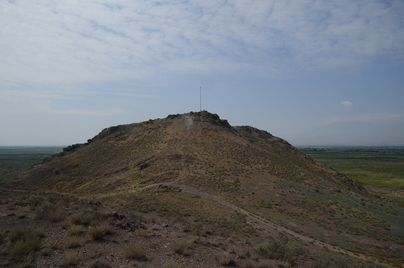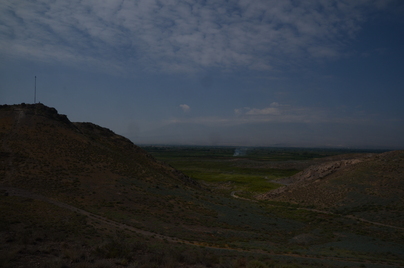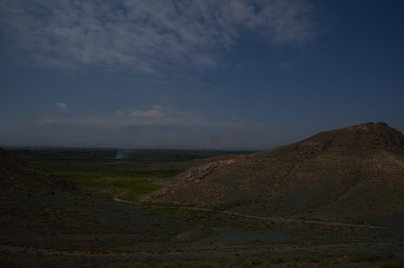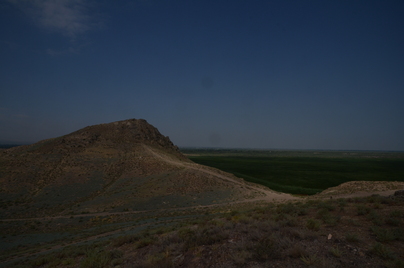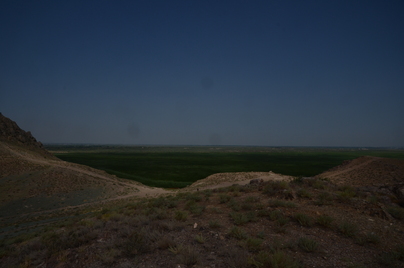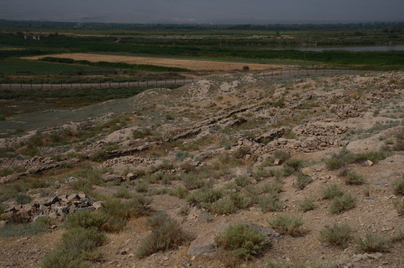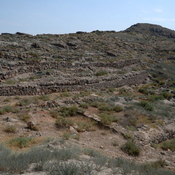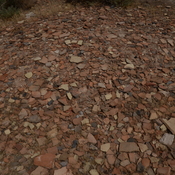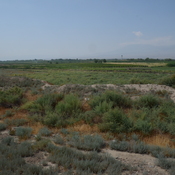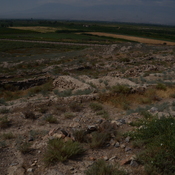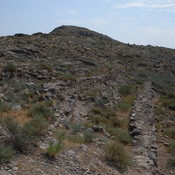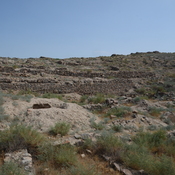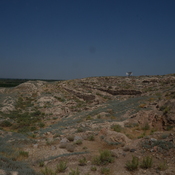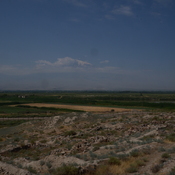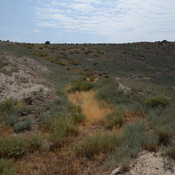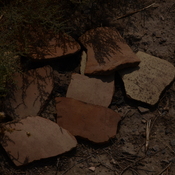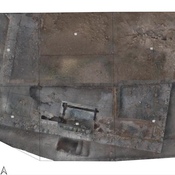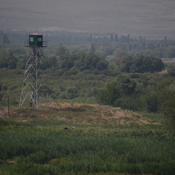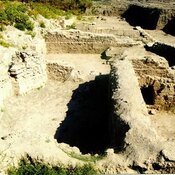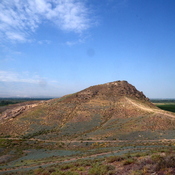Il n'y a pas une annotation en français. Présenté est une annotation en Anglais.
Artashat (Armenian: Արտաշատ); Hellenized as Artaxata (Greek: Ἀρτάξατα), has been founded, around 176 BC, by Artaxes I, the progenitor of the Artaxiad dynasty. It was a large commercial city and the capital of ancient Armenia during this reign. The name of the city is of Iranian origin. Artaxata/Artashat can be interpreted as meaning : Joy of Artashes. Pliny: The more famous towns in Lesser Armenia are Caesarea, Aza, and Nicopolis; in the Greater Arsamosata, which lies near the Euphrates, Carcathiocerta upon the Tigris, Tigranocerta which stands on an elevated site, and, on a plain adjoining the river Araxes, Artaxata1.
See:
- R. H. Hewsen, s.v.. "Artaxata" in: Encyclopædia Iranica 1986- http://www.iranicaonline.org/articles/artaxata-gk
- https://web.archive.org/web/20120403091451/http://armenianmonuments.org/en/monument/Khorvirap/61
- Armen V. Tonikian: The Layout of Artashat and its Historical Development. In: Mesopotamia, Nr. 27, 1992, S. 161–187 -https://aragats.arts.cornell.edu/?wpfb_dl=50
- Achim Lichtenberger, Torben Schreiber, Mkrtich H. Zardaryan, First Results and Perspectives of a New Archaeological Project in the Armenian Capital Artaxata: From Artashes-Artaxias I to Roman Imperialism. In: Electrum. Nummer 28, 2021, S. 245–276, doi:10.4467/20800909EL.21.016.13374.
- Artaxata /pokr vedi project/ (Armenia)https://www.krukowski-center.uw.edu.pl/research/artaxata
Références
- ↑Pliny the Elder, Natural History 1-11
Artashat (Armenian: Արտաշատ); Hellenized as Artaxata (Greek: Ἀρτάξατα), has been founded, around 176 BC, by Artaxes I, the progenitor of the Artaxiad dynasty. It was a large commercial city and the capital of ancient Armenia during this reign. The name of the city is of Iranian origin. Artaxata/Artashat can be interpreted as meaning : Joy of Artashes. Pliny: The more famous towns in Lesser Armenia are Caesarea, Aza, and Nicopolis; in the Greater Arsamosata, which lies near the Euphrates, Carcathiocerta upon the Tigris, Tigranocerta which stands on an elevated site, and, on a plain adjoining the river Araxes, Artaxata1.
See:
- R. H. Hewsen, s.v.. "Artaxata" in: Encyclopædia Iranica 1986- http://www.iranicaonline.org/articles/artaxata-gk
- https://web.archive.org/web/20120403091451/http://armenianmonuments.org/en/monument/Khorvirap/61
- Armen V. Tonikian: The Layout of Artashat and its Historical Development. In: Mesopotamia, Nr. 27, 1992, S. 161–187 -https://aragats.arts.cornell.edu/?wpfb_dl=50
- Achim Lichtenberger, Torben Schreiber, Mkrtich H. Zardaryan, First Results and Perspectives of a New Archaeological Project in the Armenian Capital Artaxata: From Artashes-Artaxias I to Roman Imperialism. In: Electrum. Nummer 28, 2021, S. 245–276, doi:10.4467/20800909EL.21.016.13374.
- Artaxata /pokr vedi project/ (Armenia)https://www.krukowski-center.uw.edu.pl/research/artaxata
Références
- ↑Pliny the Elder, Natural History 1-11

